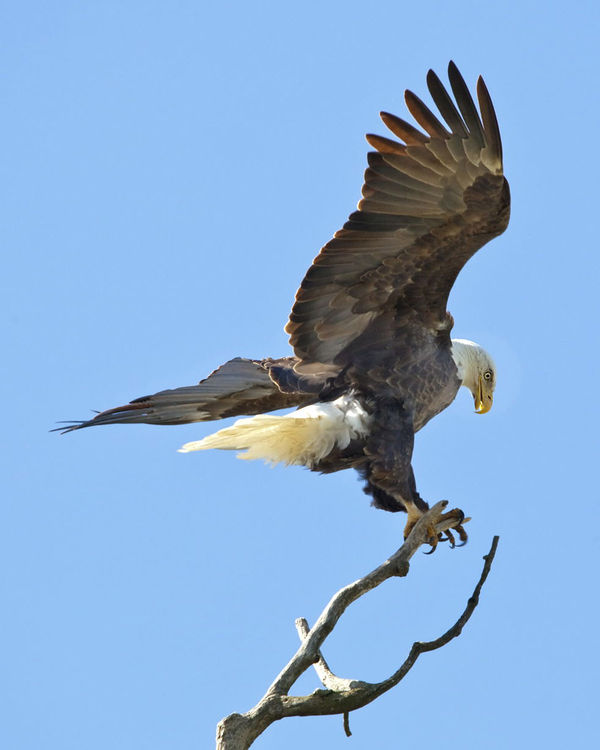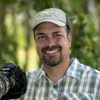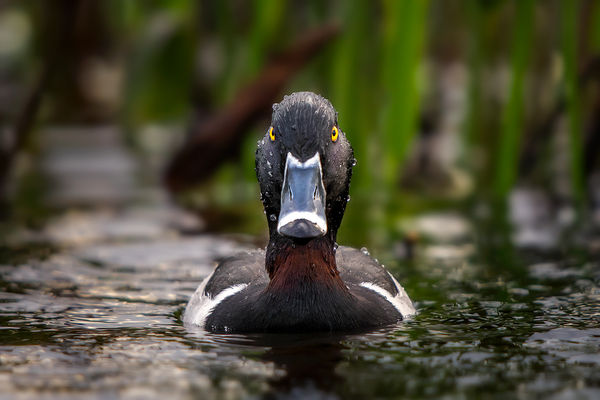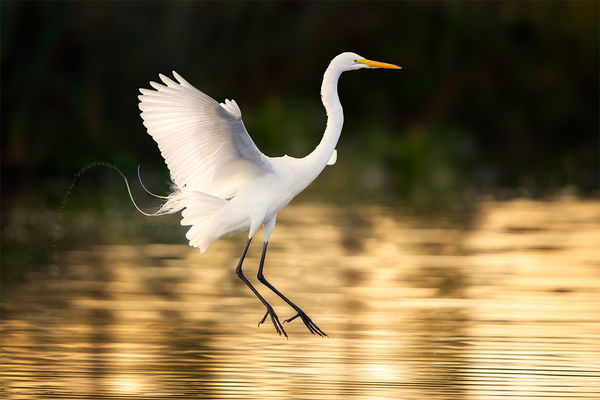How do some of you do it?
Apr 15, 2016 10:09:06 #
Then I must assume you were attacking my photographic skills without even seeing them. Regardless, it sure seems like this is the case. If not, my apologies but it isn't fair to the OP to hijack the question with this stuff.
Apr 15, 2016 10:24:16 #
This....
Canon 5D Mark II
Tamron 150-600mm Lens
RAW capture
f-8 // Aperture Priority // ISO = Auto
--------------------------------------
Opened in RAW with Bridge... Did a little adjustments there.
Open to CS-5 (Photoshop) .. Did a little more there - Changed to 8 bit and cropped to fit frame -- Used D-fine (NIK-Google) to take down the noise. Saved as TIF (For Printing) and convert to jpg for posting...
Eagle was about 100 Feet from camera... Handheld, Light breeze from the north = about 20 miles per hour. Time was about 2:00 P.M. C.S.T.
Canon 5D Mark II
Tamron 150-600mm Lens
RAW capture
f-8 // Aperture Priority // ISO = Auto
--------------------------------------
Opened in RAW with Bridge... Did a little adjustments there.
Open to CS-5 (Photoshop) .. Did a little more there - Changed to 8 bit and cropped to fit frame -- Used D-fine (NIK-Google) to take down the noise. Saved as TIF (For Printing) and convert to jpg for posting...
Eagle was about 100 Feet from camera... Handheld, Light breeze from the north = about 20 miles per hour. Time was about 2:00 P.M. C.S.T.
Apr 15, 2016 10:24:58 #
Lots of good advice in this thread. It really does take a lot of time, patience, and getting to know the birds you're photographing. It also helps to specifically go to areas where the species you want to photograph isn't scared to death of people.
For instance, in the area around my home, Great Blue Herons will fly off when you are at 100 yards away - so I go places (like FL) where they are much easier to approach.
But really, the bottom line is that you need to practice and persist if you really want the shot. There are far more times I miss the shot than capture it, that's for sure. However, I keep at it, partly for the photos, but mostly because I love animals. I'm just happy to send time with them.
A few from my files...
For instance, in the area around my home, Great Blue Herons will fly off when you are at 100 yards away - so I go places (like FL) where they are much easier to approach.
But really, the bottom line is that you need to practice and persist if you really want the shot. There are far more times I miss the shot than capture it, that's for sure. However, I keep at it, partly for the photos, but mostly because I love animals. I'm just happy to send time with them.
A few from my files...
Apr 15, 2016 10:27:27 #
Apr 15, 2016 10:27:53 #
peterg
Loc: Santa Rosa, CA
rook2c4 wrote:
:thumbup: My mantra for good photos, or any art, is: Know your subject, composition, lighting & technique. Birds, like other creatures, go where they can get food with the least effort. I see the same birds at the same place at the same time/tide day after day.Take the time to just sit quietly and observe. There will be some trees/branches which will attract a higher number of birds than others. And birds, like many creatures in the animal kingdom, have a tendency to repeat patterns - you will see them often landing on the same branch again and again throughout the day. Not only patience, but close observation of behavior patterns is key.
Apr 15, 2016 10:28:42 #
Birds and wild animals are as curious as we are.
If you stay in the wilderness for longer time - moving slowly or coming to the same place often (that includes the multi-day blinds), you will see the curious birds and animals getting very close to you.
Keep your tent door closed, for sure!
Although sometimes it helps to feed them a little bit here or there?
Then, even the moderate length telephoto will accomplish a good quality picture - with the background of your taste.
If you stay in the wilderness for longer time - moving slowly or coming to the same place often (that includes the multi-day blinds), you will see the curious birds and animals getting very close to you.
Keep your tent door closed, for sure!
Although sometimes it helps to feed them a little bit here or there?
Then, even the moderate length telephoto will accomplish a good quality picture - with the background of your taste.
Apr 15, 2016 10:31:19 #
Mark7829
Loc: Calfornia
DerBiermeister wrote:
I am specifically talking about capturing those fantastically sharp photos of zoomed-in birds (filling most of the image), that appear to be taken in wooded areas.
Assuming each shot took a fair amount of time to compose, and also probable use of a tripod -- how do you know the bird is going be on that specific branch at that time? My experience is that birds don't stay in one spot for more than a few seconds.
Assuming each shot took a fair amount of time to compose, and also probable use of a tripod -- how do you know the bird is going be on that specific branch at that time? My experience is that birds don't stay in one spot for more than a few seconds.
It is preparation, pre-visualization, practice and .. location, location, light, more location and more light. No you don't know that a bird is going to be on a particular branch but you need to go where the birds are and is often a preserve of some sort.
Yes, expensive lenses, TC's, big tripods with a gimbal head, and a high frame rate camera.
Yes, you are up at dawn, before sunrise and at the location and you wait.
Did I mention patience, perseverance and luck? BTW a bird sitting on a branch looking pretty is boring. There needs to be a story element that makes the image compelling. Story wins awards, sharpness - not so much.
Apr 15, 2016 10:32:38 #
After looking at all the photos posted all I can say is that they all look great and thanks for all the beautiful photos. It makes me want to get do some more bird photos myself....Rich
Apr 15, 2016 10:34:02 #
DerBiermeister wrote:
I am specifically talking about capturing those fantastically sharp photos of zoomed-in birds (filling most of the image), that appear to be taken in wooded areas.
Assuming each shot took a fair amount of time to compose, and also probable use of a tripod -- how do you know the bird is going be on that specific branch at that time? My experience is that birds don't stay in one spot for more than a few seconds.
Assuming each shot took a fair amount of time to compose, and also probable use of a tripod -- how do you know the bird is going be on that specific branch at that time? My experience is that birds don't stay in one spot for more than a few seconds.
Taxidermist! The bird is always where you put it! Stays right there. Otherwise thousands of dollars of gear and camo equipment.
The stuffed animal is much cheaper. Also the zoo, and game preserves.
Apr 15, 2016 10:37:17 #
rook2c4 wrote:
True indeed, mcveed. And the greater amount patience and persistence, the better the odds. Perhaps that is why your luck is increasing.
Luck has very little to do with it. Best explanation is-- Luck is where oportunity meets preparation.
Apr 15, 2016 10:46:51 #
Mark7829
Loc: Calfornia
boberic wrote:
Luck has very little to do with it. Best explanation is-- Luck is where oportunity meets preparation.
There is ALWAYS a bit of luck even if you are best prepared. Let me repeat, there is always a bit of LUCK.
You are familiar with Ansel Adams? His most famous image is Moonrise Hernandez. He just happened to be driving that night by the town of Hernandez and saw the light - literally!
Quote Ansel:
Moonrise is "certainly my most popular single image", said Adams. It "combined serendipity and immediate technical recall." Serendipity means lucky chance. He "felt at the time it was an exceptional image" and when he took it, he felt "an almost prophetic sense of satisfaction."
http://www.hcc.commnet.edu/artmuseum/anseladams/details/moonrise.html
Fifteen minutes after he took the shot, the light and the image was gone. Ansel would disagree with your assessment. ALL true photographers recognize the element of luck.
Apr 15, 2016 10:48:01 #
bigwolf40 wrote:
NO photo....Rich
===========================
Was loading it up when you answered this..............
Try again it IS there.
Apr 15, 2016 10:53:39 #
Steve Perry wrote:
Lots of good advice in this thread. It really does... (show quote)
===================
Very good work here....
Fine craftsmanship.
I like them ALL.
Apr 15, 2016 10:53:53 #
James R wrote:
===========================
Was outing it up when you answered this..............
Try again it IS there.
Was outing it up when you answered this..............
Try again it IS there.
Ok I got it and it's a good shot. I don't see to many large birds so most of my shots are when the small ones are not moving...Rich
Apr 15, 2016 10:57:20 #
DerBiermeister wrote:
I am specifically talking about capturing those fantastically sharp photos of zoomed-in birds (filling most of the image), that appear to be taken in wooded areas.
Assuming each shot took a fair amount of time to compose, and also probable use of a tripod -- how do you know the bird is going be on that specific branch at that time? My experience is that birds don't stay in one spot for more than a few seconds.
Assuming each shot took a fair amount of time to compose, and also probable use of a tripod -- how do you know the bird is going be on that specific branch at that time? My experience is that birds don't stay in one spot for more than a few seconds.
Hey DB,
well you have arrived at the dilemma I faced a few years ago. I kept looking at photos on Art Morris' website: birdsasart.com and wondering, how did he do that? I could not afford his workshops so I kept wondering. I did find a workshop in Costa Rica that I could afford with Greg Bosco, and later met him and Doug Brown in NM on an other workshop.
Here is what I learned. Most small bird photos are shot hand held, because they are just too quick, and even with a excellent tripod and the best gimboled head, I can't get it on target quick enough. I do use a tripod every chance I get, but it is way less than 50% of the time in bird photography and zero percent when shooting BIF. But there is hope! and in a environment that has a high bird density, setups can be great.
I ran into to Alan Murphy one day in NM and he had made some setups for raptors, and he let me shoot over his shoulder and I got some great shots. Alan has some videos on how to make setups that will bring birds to where you want them. So with a setup, you manually focus on a flower or perch, be on a tripod, maybe set up some flash and sit and wait for a bird to come. Check out his website for setup videos. Yes, you have to buy them.
In Costa Rica, when photographing hummingbirds, the density of birds was so great that I manually focused on a flower with the camera on a tripod and just shot when a bird was at the flower. There were so many birds, I shot about 750 frames per hour; trashed most, but I have a portfolio of winners.
I have the good fortune of having a wife who likes to travel and is a good photographer. So we travel a lot, mostly to photograph birds. We are currently in Mexico headed to Holbox island and we should get to see herons, flamingos, and other water birds. I try to find a "birder" at each location we visit, and learn about the local birds and where to find them. I do shoot prime telephotos, usually with flash and a better beamer to put a little light on the bird, but I try not to have a "flashed" look. Sometimes I shoot from a car with a beanbag on the window, but mostly walking and looking. If you can travel, find areas of high bird concentrations so it does not get boring. During migration there are a lot of places like that. If you can't afford to travel, find some birders and ask where to see good stuff. Gene51 who lives in NYC posted some fantastic Eagle photos, so I asked were in Alaska did you get that, Ha, he got them just a few miles out of NYC on the Hudson river. So... you don't have to go to crazy places to get good bird photography.
I got a lot of excellent photos on a trip to the coast of Texas (High Island) during migration. Prior to the trip I had hopes of a good photo of a painted Bunting. Finally I saw one for about 15 seconds. The shot is attached; but if I had tried to use a tripod I never would have made it. One last thing: shoot at the highest frame rate you camera body will go. For each of the posted photos, I probably shot 10-20 frames since the 1DX will shoot about 10/sec. That way you get choices in head and wing position and maybe some are in better focus than others. Head and wing position can make the difference between trash an a winner. Good luck and most of all shoot a lot of frames.
Painted Bunting 1DX 600mm f4 handheld
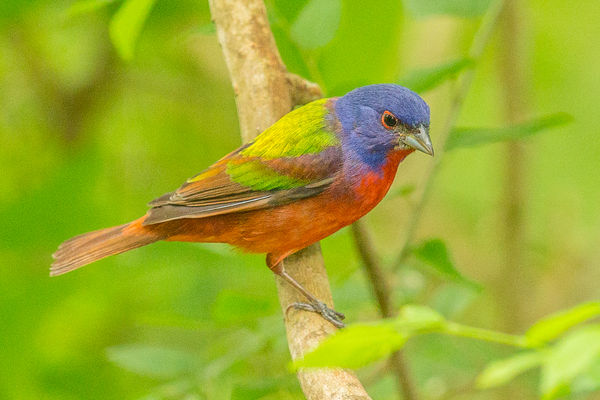
(Download)
Indigo Bunting 1DX 600mm f4 handheld
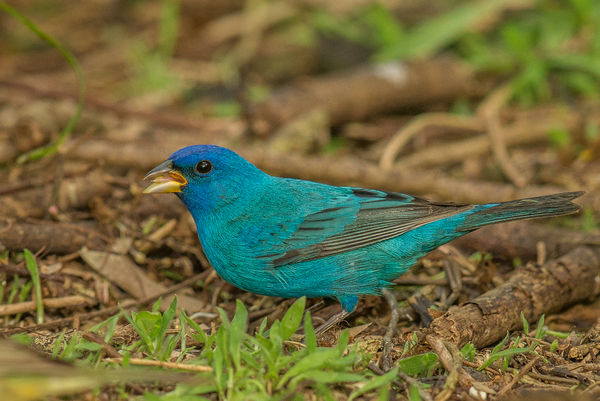
(Download)
TriColored Heron 1DX 600mm f4 handheld
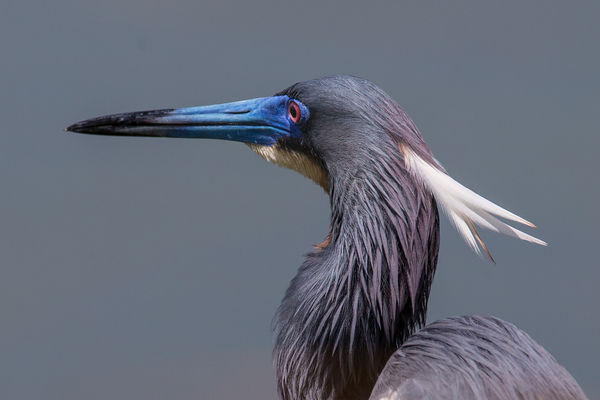
(Download)
Great Green McCaw 1DX 300mm f2.8 hand held
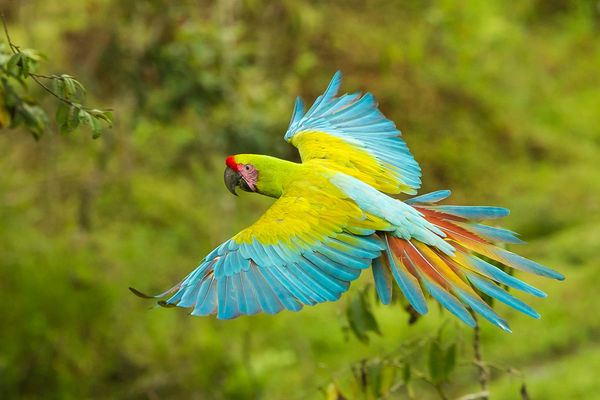
(Download)
Black Bellied Hummingbird 1DX 300mm f2.8 with flash and tripod
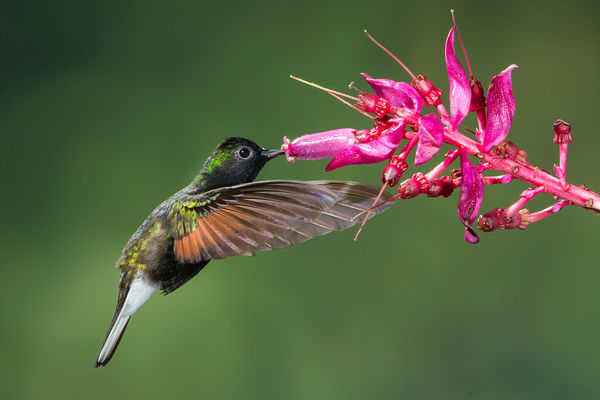
(Download)
If you want to reply, then register here. Registration is free and your account is created instantly, so you can post right away.


